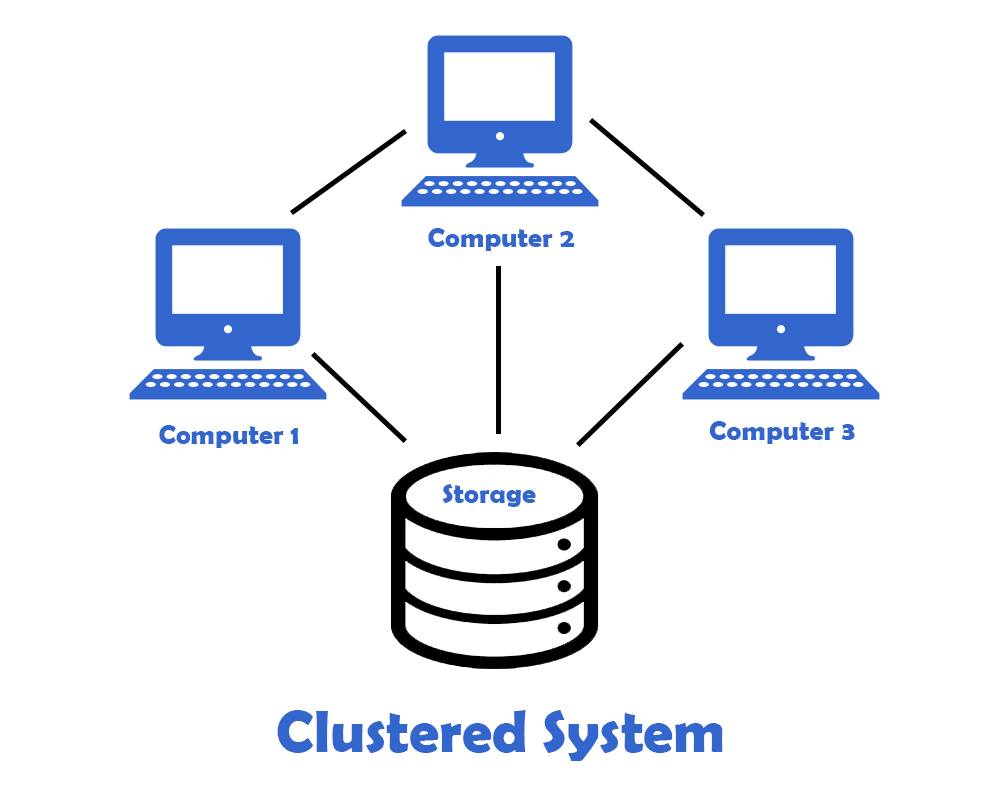Definition of clustered system
The clustered system is a group of computers in the local area network that is connected together. They share common storage. They work on a common task. They have independent input devices like a mouse, keyboard, processor and memory. The computers which are clustered together are also known as nodes.
Suppose a program or task needs to be completed by the clustered system. The clustered system may have 3 computers attached. The program is divided into 3 small processes. Each process is assigned to each computer. Process 1 is assigned to computer 1, process 2 is assigned to computer 2 and process 3 runs on computer 3. When all the processes are completed then the output of the program is delivered.

The clustered system was introduced in the 1980s and are now used in all areas of computing. Most scientific tasks and weather forecasting is done by this system.
Types of clustered system
There are three main types of clustered systems.
Asymmetric clustering system
In this system, node X is idle (standby mode) and monitor other nodes in the network. All other nodes work together. If any node fails then node X will take the task of the failed node.
Symmetric clustering system
In this system, no node is idle in the network. All nodes work together and they also monitor other nodes. If any node fails then the nearest node will take its task.
Parallel clustering system
In a parallel system, multiple users give the tasks to the system and all the tasks are completed in parallel like in asymmetric and symmetric systems.
Benefits of clustered system
Some advantages of the clustered system are:-
High performance:
The nodes work together on large tasks and the overall performance of the system is improved. The large task is completed in less time.
Reliable:
The tasks are completed without errors and if any problem occurs in the system then it is easy to fix the problem.
Easy configuration:
These systems have high data travel speed and all computers are connected to the local area network (LAN). As all the computers are placed near to each other so they are easy to configure.
Problem recovering:
If any problem occurs in the system then it is self-recoverable without user intervention.
Expandable:
New nodes can be added to the system without stopping other tasks. The new node gets its assigned task by the master computer in the network. Master computer or node is that which gives tasks to other nodes and its responsibility is the combine all the tasks after they are completed by the other nodes.
Load balancing:
One big task is divided into small tasks or processes. All nodes get their tasks that they need to be completed. If any node completes any task then the master computer gives that node another task. The tasks are distributed in the network equally and no computer stays idle.
Drawbacks of clustered system
Some disadvantages of the clustered system are:-
Technical look after:
It needs technical staff to look after the system and extra hardware is needed to maintain this system.
Costly:
Building this type of system is costly because the network devices are expensive and the programming and design that it needs are complex.
Examples of clustered system
Clustered systems are used in the following:-
- Supercomputing system
- Load balancing
- Weather forecast
- Animated movies
- Scientific computing




